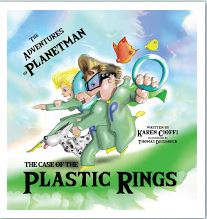Contributed by Karen Cioffi
Children, the environment, and storytelling: a few simple words yet when combined can become a powerhouse for teaching children the importance of taking care of our planet.
I belong to a number of writing groups, and was moderator of a children’s writing critique group. What I began to notice is how we as authors are missing the mark. I began to wonder why more authors aren’t incorporating conservation tidbits into their story telling.
The Perfect Format
Writers have the perfect format for teaching and molding children, and the perfect opportunity. From picture books to young adult novels, conservation and the environment are topics that authors should be thinking of writing about, or at least weave into their stories.
The saying goes, “you are what you eat,” well children become what they learn whether through their environment, including schooling, or reading.
If young children are afforded reading material that paints a picture of the benefits and consequences of conservation in simple and entertaining stories, what better way to instill a sense that they can be part of the solution and help protect our environment.
If those same children, while growing up, continue to read fiction and non-fiction stories that make mention of conservation and our environment, how much more will it have an impact on them and become a part of their lives.
While most authors may not want to devote their time to writing books about the environment, just a sentence or scene woven into a story will certainly have an effect.
It can be a subtle mention. For example, if it’s a scene with a couple of friends hanging out or on their way somewhere, one or two sentences in the scene might be:
Lucas held the soda bottle in his hand, aimed carefully, and tossed it right into the trash can.
“Nice shot, Lucas, but that goes in the recycling pail,” said Thomas.
This would be the extent of the comment or mention of conservation in the story. It’s short, almost unseen, and yet it becomes a part of the reader’s experience.
Isn’t this what writers want to do, leave an imprint in the minds and hearts of their readers? And, it’s all the more gratifying if it’s a child’s mind and heart that you're helping to develop and mold.
Why not make our potentially thought provoking and lasting words take root.
In addition to entertaining through our books and stories, we can make a difference in our future, our children’s future and the planet’s future.
I took advantage of using storytelling to engage children and bring awareness about our environment with a three-book picture book series: The Adventures of Planetman.
The first book is available for sale: The Case of the Plastic Rings.
It's a great book for any children's home library and school library.
This article was originally published at:
Children, the Environment, and Story Telling
Karen Cioffi is an award-winning children’s author, successful children’s ghostwriter, and author/writer online platform instructor with WOW! Women on Writing. She is also the founder and editor-in-chief of Writers on the Move.
For more on writing, stop by Writing for Children with Karen Cioffi.
And, if you’re looking for an easy-read, middle-grade fantasy adventure, check out WALKING THROUGH WALLS.
Or, you might be interested in a fantasy picture book written to bring awareness of our environment to children: The Case of the Plastic Rings – The Adventures of Planetman


Congratulations on your series, Karen. It sounds wonderful. I like subtle messages in fiction.
ReplyDeleteCheryl, thank you so much. I'm thrill about it!
ReplyDelete